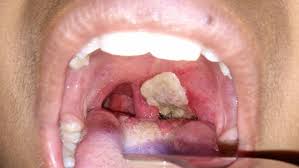Contagion Column: Diphtheria
- Mrs. Cogito
- Nov 8, 2021
- 4 min read

At the request of the Cogito Ergo Cogito Commander in Chief, Jake Hunter, the next installment of the Contagion Column will address Diphtheria. Have an infectious disease you're interested in? Drop it in the comments and I'll work on an article about it in the future!
The Roaring Twenties: A time of prosperity and rebuilding following the end of the first World War. People are happy and parties are thrown. The automobile is becoming more commonplace, the television is invented, commercial bread makers are selling pre-sliced loaves, and diphtheria is killing thousands and thousands of children.
Much like scarlet fever, diphtheria was an epidemic disease of children. Unlike scarlet fever, diphtheria was far deadlier with mortality rates up to 20%.
What is Diphtheria?
Diphtheria is an infection of an area of the throat known as the nasopharynx. The nasopharynx is between the nose and the part of the throat you can see when a person opens their mouth. If you've had a COVID test, you're likely more familiar with the location of your nasopharynx than you'd like to be, as the swab is placed in the very back of the nose into the top of the throat area (even though it feels like it's your brain that's being swabbed). Less dangerous strains of diphtheria can infect the skin and cause rashes or open sores.
Diphtheria infection causes damage and change to the tissues of membranes throughout the body like those covering the tonsils and throat. This damage causes an inflammatory response, triggering the body to send white blood cells to the site of the infection to fight off invading materials causing damage. As a result of the inflammatory response, the body begins to run a low-grade fever as the immune system ramps up. The damage caused to the throat also causes sore throat, lack of appetite, and general feelings of being unwell. These symptoms typically begin to show 2-5 days after exposure to the bacteria.
Two to three days after the above symptoms begin to occur, diphtheria's namesake symptom begins to appear. Diphtheria means "leather hide" in Greek, which refers to a thick membrane that develops over the back of the throat. The membrane can range in size and color, with variations from just small areas of blueish development to a membrane that spans the entire throat and takes on a black color due to bleeding and dried blood. If diphtheria is not treated quickly, the membrane can grow to cover the entire throat and block air moving in and out when the patient breathes. This can be life-threatening. The membrane cannot be scraped off or removed or major bleeding will occur.
Diphtheria found in the throat is spread via spit particles expelled during coughing, sneezing, or talking. If a person has a skin infection from diphtheria, the illness is spread when healthy people come into contact with open sores or areas of the rash.
What Causes Diphtheria?

Diphtheria is caused by a bacteria known as corynebacterium diphtheriae. The bacteria is bacillus, or rod, shaped on stains like the one to the left.
This bacteria is particularly dangerous because of the toxin it releases when infecting the body. Interestingly, not all corynebacterium diphtheriae bacteria release this dangerous toxin. Only bacteria that have been infected themselves by certain viruses produce the toxic substance. Yes, the bacteria that is infecting you can be infected by something else. Nature is crazy.
What Complications Can Diphtheria Cause?
A host of complications can occur for those hosting a diphtheria infection. Most are caused by the toxin mentioned above and many people infected with bacteria that cannot excrete the toxin have no major complications.
Myocarditis, or swelling of the heart, can occur if the toxin travels through the bloodstream and comes into contact with the cells of the heart. This can cause high heart rate, the heart skipping beats, or heart failure. Myocarditis is very dangerous and can be life-threatening.
Another interesting complication diphtheria toxin can cause is neuritis, or inflammation of the nerves. Nerves carry signals from the brain to the body when you want to move your limbs, swallow, or speak. Since diphtheria infection occurs most frequently in the throat, nerves that control the palate, eyes, and chest are common locations of neuritis. Inflammation of the nerves can cause temporary paralysis, or an inability to move the parts of the body that the nerves would normally signal to move. This can be very dangerous if the muscles of the chest and diaphragm are affected as it can cause an inability to breathe and eventually death. Paralysis causes by diphtheria normally goes away on its own after a short period of time (as long as a person doesn't succumb to lack of oxygen before it has time to do so).
How is Diphtheria Treated?

In the late 1800s, scientists were able to create an antidote to the diphtheria toxin by using blood drawn from horses that were immune to diphtheria. How did scientists know horses could be immune to diphtheria and through that learn that injecting parts of horse blood into humans could cure diphtheria? I can only assume lots of strange trial and error was involved. This treatment is not recommended today because the antitoxin can cause serious side effects. Instead, today we prevent diphtheria before it can cause damage through vaccines! An inactive form of the diphtheria toxin is given to patients via the DTap and Tdap vaccines. DTap stands for diphtheria, tetanus, and acellular pertussis (whooping cough) and is given to babies at 2, 4, 6, and 15 months of age and then again between 4 and 6 years old. Tdap also stands for diphtheria, tetanus, and acellular pertussis but has reduced amounts of diphtheria and pertussis prevention. Tdap is given every 10 years starting at age 11 or with exposure to rusty metal (to prevent tetanus development) and with each time a woman is pregnant.
Thankfully, the advent of the Tdap vaccine has reduced cases of diphtheria to almost none in the United States. Areas with less vaccine coverage have higher rates of infection, but still much lower than in the past. Take a moment to celebrate the fact that you don't need to worry about dying from a gross membrane covering the back of your throat thanks to the wonderful world of vaccines, everybody!












As gross as this is, I also really enjoyed this post and learning about a vaccine that fights a disease before you get it!
Interesting read! I submit MRSA as a potential next topic for the Contagion Column!